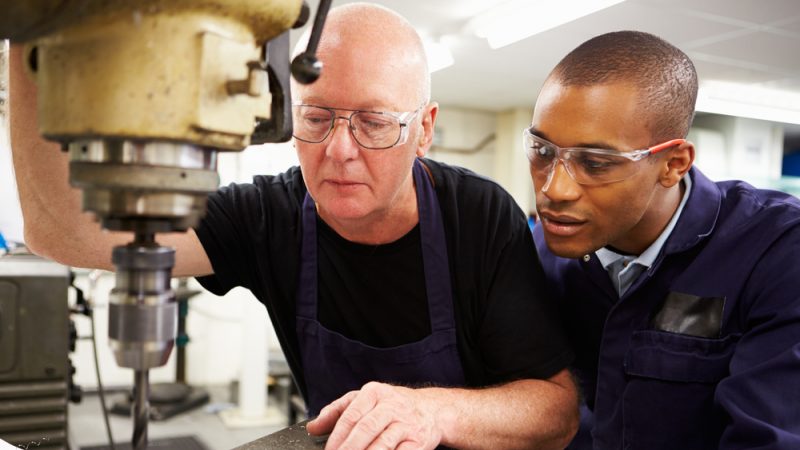6 strategies for supercharging classroom motivation

The Dean of Learning Design at Ambition Institute, Peps Mccrea, shines some light on the Science of Motivation and what it might teach us about behaviour and learning…

- by Peps Mccrea

Motivation is a big part of school life. As teachers, we’re constantly attempting to cajole, encourage and orient our pupils towards, or away from certain behaviours. Sit down, look this way, this is important, come on, you can do this – you get the drift.
Motivation is a central part of what we do, day in, day out. But how effective are our efforts? Have we got it down to a fine art? Or could we do even better?
The answer to these questions lies partly in the nature of motivation itself. Motivation is highly complex and largely invisible, which makes it difficult to evaluate the impact of our efforts to influence it.
As a result, becoming better at motivating our pupils isn’t necessarily something we can figure out through trial and error, by relying on our intuition or by copying others. Motivation in schools therefore remains something of a mystery. A dark art that some teachers have and others don’t.
But what if science could shed some light on motivation? Help define what it is and how it works? Would that help us do a better job of motivating and helping our pupils to learn? It just might.
Although the research around behaviour and motivation is nowhere near as strong as that of cognitive science – it suffers from multiple fields trying to do similar things, with overlapping theories and terms, and a lack of coherence and replication – there’s just about enough there to give us some footholds.
And the problem is just too important and urgent to wait on. So what can the Science of Motivation teach us?
Insights from the Science of Motivation
The first thing the evidence can tell us is that lack of motivation is a real issue in schools. It’s something we should expect to encounter, and not just a symptom of poor teaching or a wonky school environment.
For reasons most likely associated with the way our brains have evolved over deep history, pupils have a generally low predilection for learning the things we strive to teach in school.
Motivation is as much a responsibility of schools as instruction. It’s only when we get both these things right that we’re giving our pupils the best in terms of their learning and future life chances.
The second thing the evidence tells us is that motivation is much more localised than we tend to assume. We often think about a pupil ‘being motivated’ or not, seeing motivation as a fixed personality trait that applies consistently across all situations.
However, it seems that the reality of motivation is much more fluid, and that it differs depending on opportunity, prior experience and circumstance.
Instead of thinking about our pupils as being simply motivated or not, we should think about them being motivated towards or away from something, by something.
Lastly, the evidence is clear that motivation is a far more emotionally powered force than we tend to assume. Too often we’ll attribute pupil behaviour to conscious, deliberate choice, when it’s more likely the result of an unconscious response based on prior experiences and local conditions.
So where do these insights leave us? What kinds of experiences and conditions have an influence? How might we leverage them to increase motivation for learning?
Six principles for boosting motivation
When we join the dots across multiple fields, six broad principles emerge. These are general enough that they can apply across most situations for most people. Exactly what they’ll look like in each situation is up to individual schools and teachers.
1 | Make it satisfying
We are motivated towards pleasurable experiences and away from painful ones. As teachers we constantly leverage this principle by making learning activities enjoyable, providing signals of approval and helping our pupils become more proficient.
Of these three strategies, developing proficiency is our best long-term bet in terms of building motivation. If we stop making activities enjoyable or providing approval, pupil motivation will return to its original value (or less). We should only use these approaches as temporary scaffolds towards fostering proficiency and remove them as soon as we can.
2 | Make it likely
We are motivated towards doing those things that give us the best odds of success. These odds tend to be unconsciously calculated from our past experiences.
If we want our pupils to be motivated to learn maths, we’ve got to ensure the majority of their experiences are successful. We can do this by breaking down content into manageable chunks and pitching it carefully to be just within reach of our learners.
3 | Make it economical
We are motivated by doing less! We are naturally economical beings, and will quite sensibly avoid wasting resources. The best way to reduce the costs of decisions and ongoing effort is by building routines.
Routines can be both behavioural and instructional – how pupils enter the classroom, and how we manage classroom discussion, for example. The more familiar the experience, the less pupils have to think about the process, allowing them to think more about the content.
4 | Make it normal
We are motivated to conform. We take cues from what those around us do and expect. The best way to leverage this is to amplify those behaviours that we want to encourage and attenuate those we don’t.
Call out instances where you see desired behaviour. Highlight just how many people are doing this, and tell stories of the great attitudes demonstrated by other classes. Don’t highlight occasions where many people aren’t doing what you want, as they will take it as a sign that this is socially acceptable.
5 | Make it ‘in’
We conform most strongly when we feel part of a group. Belonging is a powerful catalyst for motivation.
Build motivation in your classes by uniting pupils around a common purpose. Ensure that everyone is included, and where possible, has a role to play where their voice and contribution is valued by the whole group. Take care when providing critical feedback, so that pupils don’t interpret it as a sign of not belonging.
6 | Make it theirs
We are motivated most when we feel we have had a choice, or at least signed off on our actions.
Over time, help your pupils to understand the nature of motivation, what influences it and how they might develop greater control over their own behaviours. This will take time but is well worth the effort, because being able to motivate yourself – as most of us are well aware – is a superpower that extends well beyond the school gates.
So, there you have it – a whirlwind tour of the Science of Motivation. Combined with great instruction, it has the potential to increase your impact, expertise and satisfaction in the classroom.
Coming soon
If you enjoyed this article and want to learn more, look out for Pep’s forthcoming book, Motivated Teaching, due for release in March 2020. Readers can pre-order a copy via Amazon.
Peps Mccrea is an award-winning teacher educator, designer and author. He is Dean of Learning Design at Ambition Institute, author of the High Impact Teaching series, and holds fellowships from the Young Academy and University of Brighton.
Peps has three Masters degrees, two lovely kids, and multiple distracting tattoos (which he’ll tell you all about after a couple of beers). Visit pepsmccrea.com for the full shebang. You can also follow him on Twitter at @PepsMccrea.










